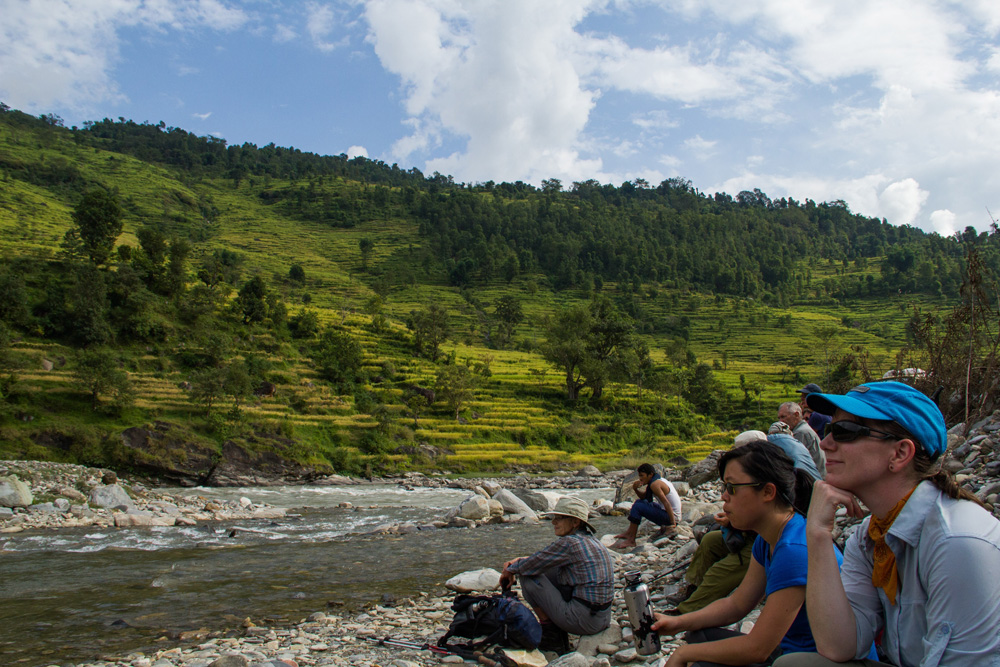Do Donor Trips Actually Work?

For organizations with international projects, Donor Trips can be an effective way of raising money, but only if done right.
When I started Philanthropy without Borders, I knew there were many organizations taking their donors to the field to experience the mission first hand, and that often the initiative was failing in many ways. Sometimes they raised money, sometimes they didn’t. Sometimes lifelong relationships were formed with participants; other times a lack of follow-up meant lost connections.
This was recently validated in my web traffic, where one of the most Googled phrases bringing people to my site is “Do donor trips actually work?” It’s not surprising that while there are many organizations undertaking this initiative, a good number of them are not seeing the desired results. In my experience, the challenges fall into three categories:
- – Fundraising Strategy
- – Travel Implementation
- – Cross-Cultural Competence
In this article, I’ll explore four common challenges in each category and what you can do to resolve them.
Fundraising Strategy
It’s not surprising that when donor trips fail, it is often the result of poor fundraising strategy.
Nonprofits typically reach out to travel agents when planning their trips and though they can be excellent partners in coordinating logistics, they don’t know a thing about fundraising. They are not going to be able to tell you what to do to make money and continue advancing the mission. Just like with fundraising galas, hiring an event planner that specializes in nonprofit events is totally different from hiring a wedding planner. They both can book your venues and find caterers. But only one can truly elevate your event and create an impactful experience for your donors.
The main problems I see in fundraising strategy are:
1. Not recruiting the right people
If the pool of potential recruits is limited, some nonprofits are happy to have anyone sign up for the trip. Unfortunately, the tactic of mass promotion will inevitably lead to some people signing up for the trip due to its exotic destination, not because of passion for the mission. They may also lack the capacity or inclination to contribute monetarily to the organization beyond their trip fee.
2. Not setting appropriate goals based on recruits
The mentality of “if you built it, they will come” has certainly not translated to donor trips. Some organizations set financial goals that are not realistic based on the giving history of the participants or the length and depth of their relationships to the organization. Just as in planning a gala – the most important aspect is who is in the room.
3. Not asking for the gift or passively waiting for it to come
Many organizations shy away from talking about money on these trips and miss an important opportunity to ask for support. Instead, they don’t say a word about funding, return home, and passively wait for the checks to appear. The mantra “you don’t get what you don’t ask for” is something every development professional understands. We must ask for the gift on the trip, and can do so in a graceful and effective way.
4. Not following up to leverage the participant’s experience
I don’t just believe “the fortune is in the follow-up”, but also “the failure is in the follow-up.” What you do after the trip is almost as critical as what you do before the trip and what you do during the trip. This doesn’t just mean following up on gifts, but also offering ways for participants to leverage their experience to spread awareness and connect others with the mission.
Travel Implementation

Without the help of a travel agent, many organizations attempt to do the logistics and planning in-house. They can be quite successful at it if they have adequate support both at headquarters and in the field. If adequate support is not in place or the organization has limited experience in implementing donor trips, there are a few pitfalls they may encounter:
1. Not having enough bandwidth among current staff
Unless trips have been long established and are routine, it is unlikely that planning and/or leading a trip is on anyone’s job description. Adding this initiative on top of existing work creates capacity issues and is the reason why many organizations choose to seek outside help or outsource their logistics and planning to a travel partner.
2. No clear person in charge of planning
The responsibility of planning a trip is often shared among several individuals in multiple departments, which can lead to confusion and lack of accountability. With so many stakeholders, there should be absolute clarity in responsibility and delegation. This is why I recommend every nonprofit have one individual project-manage the entire trip.
3. Putting too much burden on program staff or partners in the field
The bulk of the work often falls on the program staff that live on site or the local partners implementing the fieldwork. No one has as deep and up-to-date understanding of the work and cultural context as field staff. It is critical to have their buy-in and engage them in the planning, but they should not be overloaded with mundane tasks and minute details. Every moment they spend working on donor trips is time taken away from fieldwork supporting your core mission.
4. Itinerary not conducive to meeting objectives
Inexperienced organizations (and travel agents) will often create itineraries that are counterintuitive to the goals of the trip. They create jam-packed schedules with no time for debrief and reflection. They build in too many tourist activities that are irrelevant to the theme and scope of the mission. A masterfully designed itinerary keeps the main objectives in mind, whether you are trying to raise money, recruit board members, or build lifelong connections with volunteers.
Cross-cultural Competence
This much-overlooked factor of donor travel is one where some of the biggest failures can occur. Long gone are the days when a simple handout of “Do’s and Don’ts” constituted sufficient preparation for the journey ahead. In fact, those days never actually existed.
Cultural misunderstandings can undermine the success of a donor trip and future funding, so it is important to prepare people well before they leave the tarmac. Don’t assume that because someone has traveled outside their home country that they are well equipped to adjust their behavior and expectations to a foreign environment – even if they have been to that same country before.
Here’s what I mean:
1. Travelers lack appropriate expectations
You have a duty to inform participants of travel situations relating to health, safety, law, and logistics. Let them know the hotel is 3-stars, not 5-stars, and that 3-stars in India is different from 3-stars in Indiana.
Don’t just say the site is a 2-hour drive from the hotel. Say it will be 2-hours in an air-conditioned van on unpaved, windy roads.
Do not merely send your participants a guidebook or one-sheet about the trip expectations (which they may not read) – follow up with a phone call or in-person meeting to restate expectations and address concerns. You will need to be proactive in assessing their expectations and deeming them reasonable.
If a donor has unreasonable expectations from the onset and refuses to accept your accommodations, they should not attend the trip. It may sound extreme, but trust me; this is in the best interest of you, your organization, and even the donor. We want to set people up for positive experiences that create lasting change, and that’s hard to do if we’re arguing about showerheads and Wi-Fi speeds.
2. Travelers are ill equipped to adjust their behavior
The best participants are the ones who are aware and respectful of the differences they will encounter in both the people they meet and the places they go. Assessing this can be challenging and often surprising.
Just because someone has extensive travel experience or has been to multiple countries on a continent does not mean that he or she will be respectful or behave appropriately. Likewise, there are plenty of people leaving their home country for the first time who experience a greater amount of culture shock and stimulation than others, but are perfectly humble and considerate when abroad.
Don’t be swayed by an impressive list of countries this person has visited. And don’t merely evaluate them based on your personal interpretation. Remember that “respectful” and “appropriate” mean different things in different contexts. Just because you don’t mind being interrupted by a donor, which you understand is a sign of enthusiasm, does not mean that same tactic will go over well with a local partner.
Ask yourself these questions about the participant:
- – How well do they listen?
- – How self-aware do they seem?
- – Do they refrain from negative judgments of others?
If you are concerned about a particular participant, have an open and honest conversation with that individual before making any promises.
3. Itinerary has exploitative elements
Many travel agents are inexperienced in programming with vulnerable populations. Clearly, a visit to a shelter housing survivors of human trafficking in Cambodia is quite a bit different from a tour of Italian wineries.
Knowing how to design trips that will cultivate empathy, not exploitation, is an essential element in donor trips. Often a nonprofit won’t realize that a trip is exploitative until they are in the midst of it. Playing with babies at an orphanage, taking slum tours, and photographing patients at a hospital or clinic are well-documented offenses.
4. Local staff, beneficiaries, and partners are ill prepared to meet donors
I believe that training and preparation goes both ways. Just as we must set accurate expectations for our donors and prepare them for the reality of the trip, we must also prepare our program staff and local partners in the field to meet these donors.
Often program staff will possess a discomfort around fundraising and “asking for money.” There may be an inherent distrust of these “wealthy people” who “want to change things.”
In many parts of the world, local communities have negative histories of dealing with outsiders coming in and wanting to implement irrelevant and ineffective changes, as well as promising big improvements or investments and failing to follow through.
These are things that must be discussed and addressed within the organization before your donors are invited to see the work. The goal is to create an environment where we understand that we are all on the same page, working toward the same goals, and respectful for the roles we have to play in the initiative.

For more information on donor travel, visit our website, join the Philanthropy without Borders newsletter, or get in touch with me directly to schedule a call and start planning your next donor trip.

